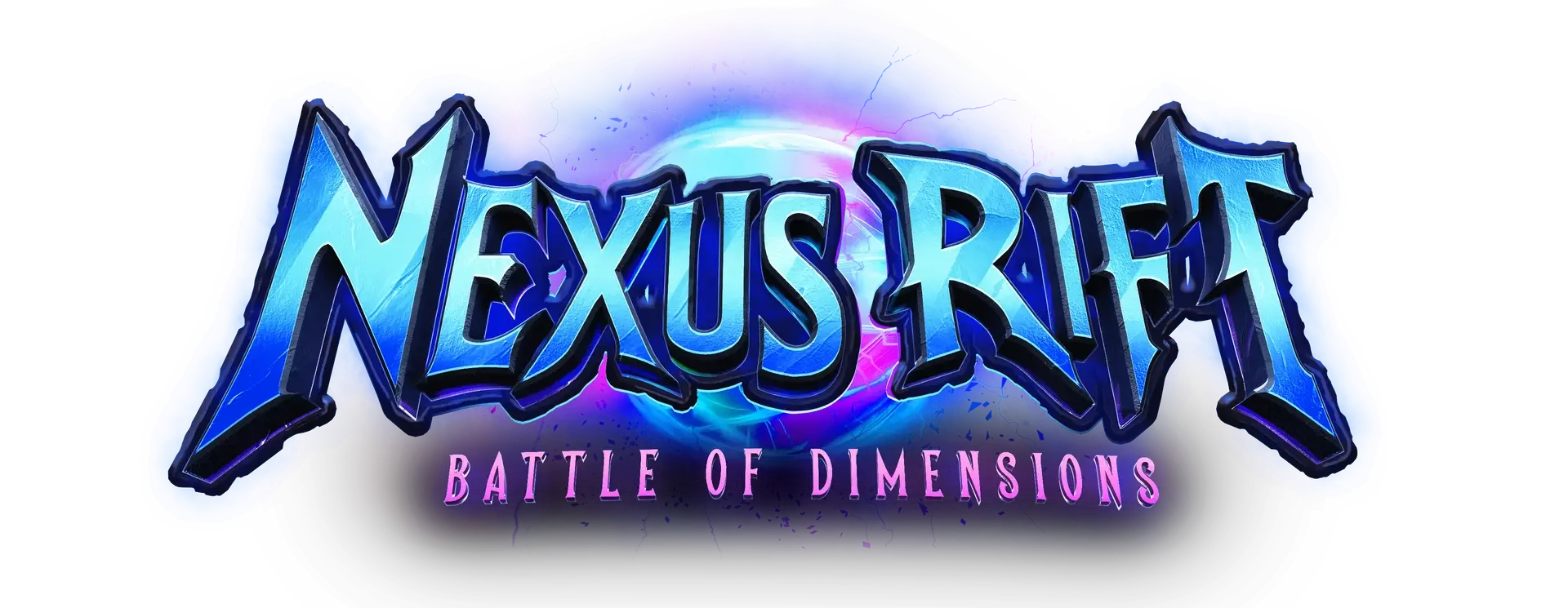Behind the Scenes of Nexus Rift: Battle of Dimensions

Introduction:
Welcome to our first “Behind the Scenes” blog post! Today, we delve into the development journey of “Nexus Rift: Battle of Dimensions.” Discover how our game came to life, the challenges we faced, and the inspirations that guided us through every step of the process.
Development Journey:
The concept for “Nexus Rift: Battle of Dimensions” originated from a deep love for Trading Card Games (TCGs) and a desire to create a more interactive experience, where players truly feel like they are commanding an army. Development began about two years ago, with the first six months dedicated to active creation. Initially, we used basic tools such as Word, Paint, and Excel. As the project evolved, we transitioned to more advanced tools like Photoshop and a custom-built database program.
We started with a simple vision: to combine the strategic depth of TCGs with the immersive experience of leading an army. The early days were filled with brainstorming sessions and prototyping. We sketched out initial concepts using Word and Paint, and managed our ideas and data with Excel. These basic tools allowed us to quickly iterate and refine our ideas.
The Team:
While I spearhead the project solo, my girlfriend has been instrumental in testing ideas and contributing to the game’s design. Additionally, feedback from family and friends has been invaluable, providing insights and helping with extensive playtesting. My background in TCGs, gaming, and proficiency with Excel have been pivotal in shaping the game and drawing inspiration for its development.
Working primarily alone has its challenges, but it also allows for a clear and focused vision. My girlfriend has been my primary sounding board, offering critical feedback and design suggestions. Our friends and family have been enthusiastic playtesters, helping us fine-tune the mechanics and ensure the game is both fun and balanced.
Concept and Design:
One of the main challenges in designing Eldoria was establishing a cohesive style and maintaining balance to ensure an enjoyable gameplay experience. This involved creating numerous concepts and drawing inspiration from video games and cartoons. Our aim was to develop a unique art style that reflects the fantasy and strategic nature of the game.
Creating the visual identity of Eldoria required a lot of experimentation. We drew inspiration from various sources, including classic fantasy illustrations, modern video games, and animated series. The goal was to create a world that felt vibrant and alive, yet filled with strategic depth. We wanted players to be drawn into the lore and visual appeal of the game, making each session an adventure.
Gameplay Mechanics:
“Nexus Rift” sets itself apart from other strategy games by offering players the role of a true commander, with significant interaction with the cards and a strong emphasis on tactical movement. The core mechanic revolves around action points, providing deep strategic elements and crucial decisions about attacks and movements. The game is designed to be easy to understand but allows for complexity as players become more experienced.
The action points system was designed to add a layer of tactical decision-making. Players must choose between moving their units, attacking, or using special abilities, creating a dynamic and engaging gameplay experience. This mechanic encourages players to think several steps ahead, planning their moves to outmaneuver their opponents.

Story and World-Building:
The lore of Eldoria draws heavily from MMORPGs and imaginative brainstorming sessions. Each faction is built around two legendary heroes, forming the foundation of their stories. Our objective was to ensure that the narrative enhances the gameplay, immersing players in the rich world of Eldoria.
Building the world of Eldoria was one of the most exciting aspects of development. We wanted each faction to feel distinct, with its own history, culture, and legendary heroes. The narrative not only serves as a backdrop for the gameplay but also provides players with a deeper connection to their units and strategies.
Feedback and Iteration:
Community feedback is at the heart of our development process. We actively listen to all perspectives and incorporate as much feedback as possible, making it the most time-consuming aspect of development. Constant adjustments to stats and rules have been made, including changes to game speed and board elements like towers, based on player input.
Playtesting has been an ongoing process, with each session offering new insights. We have adjusted the game’s balance numerous times, tweaking stats and mechanics to ensure a fair and engaging experience. Player feedback has been invaluable, helping us identify areas for improvement and ensuring that the game remains fun and challenging.
Conclusion:
We hope you enjoyed this behind-the-scenes look at “Nexus Rift: Battle of Dimensions.” Stay tuned for more updates and exclusive insights into the development of the game. Thank you for your support, and we look forward to seeing you in Eldoria!
Future Plans:
Looking ahead, we have several exciting plans for “Nexus Rift.” We are working on expansions that will introduce new factions, each with their own unique heroes and gameplay mechanics. Additionally, we are exploring the possibility of digital versions of the game, allowing players to enjoy “Nexus Rift” on various platforms. Our goal is to continue building and expanding the world of Eldoria, providing players with endless strategic possibilities and immersive experiences.
Stay tuned for more behind-the-scenes insights, updates on upcoming features, and exclusive content. We are committed to making “Nexus Rift: Battle of Dimensions” a game that players will enjoy for years to come. Thank you for being part of this journey with us.



